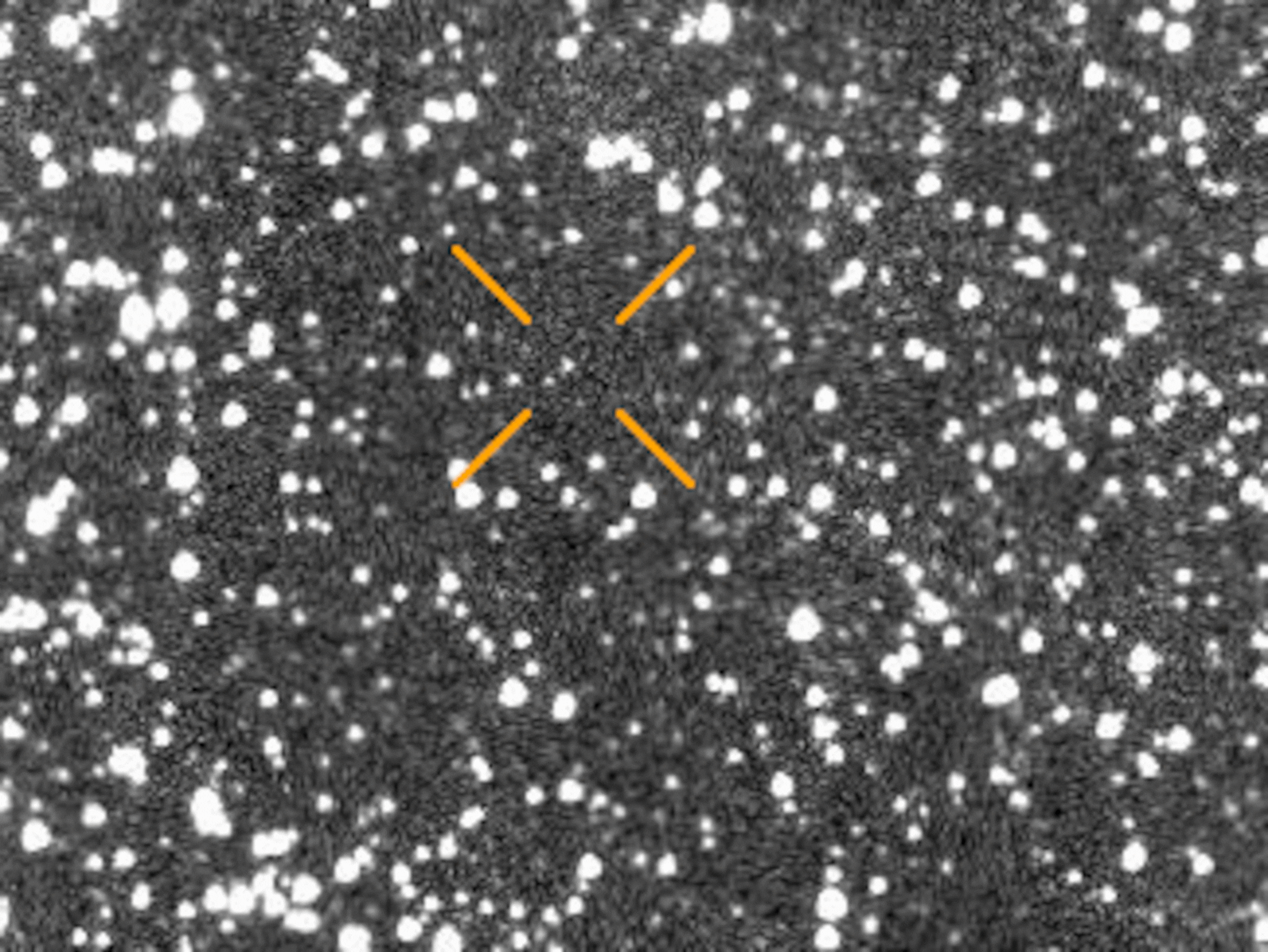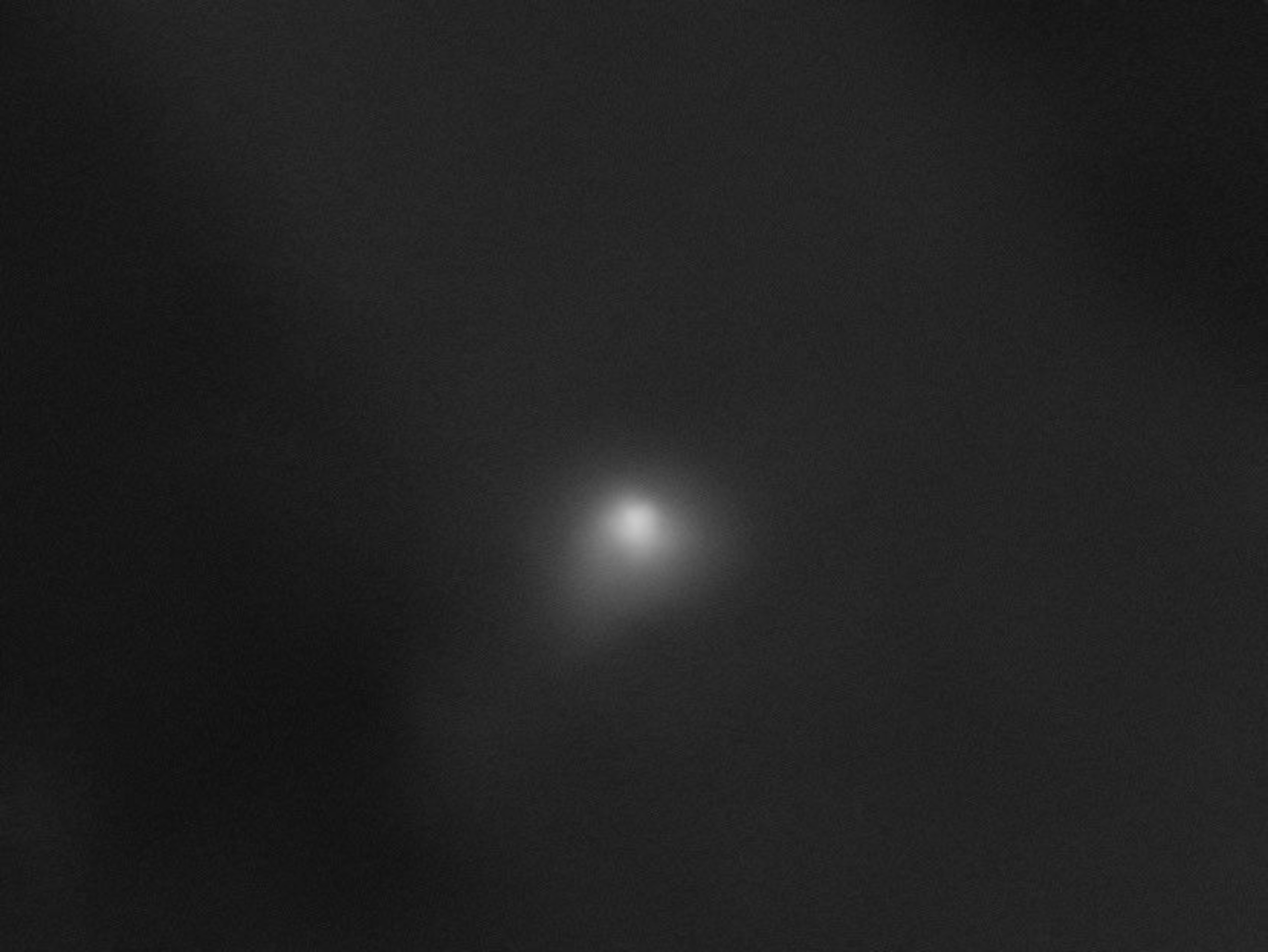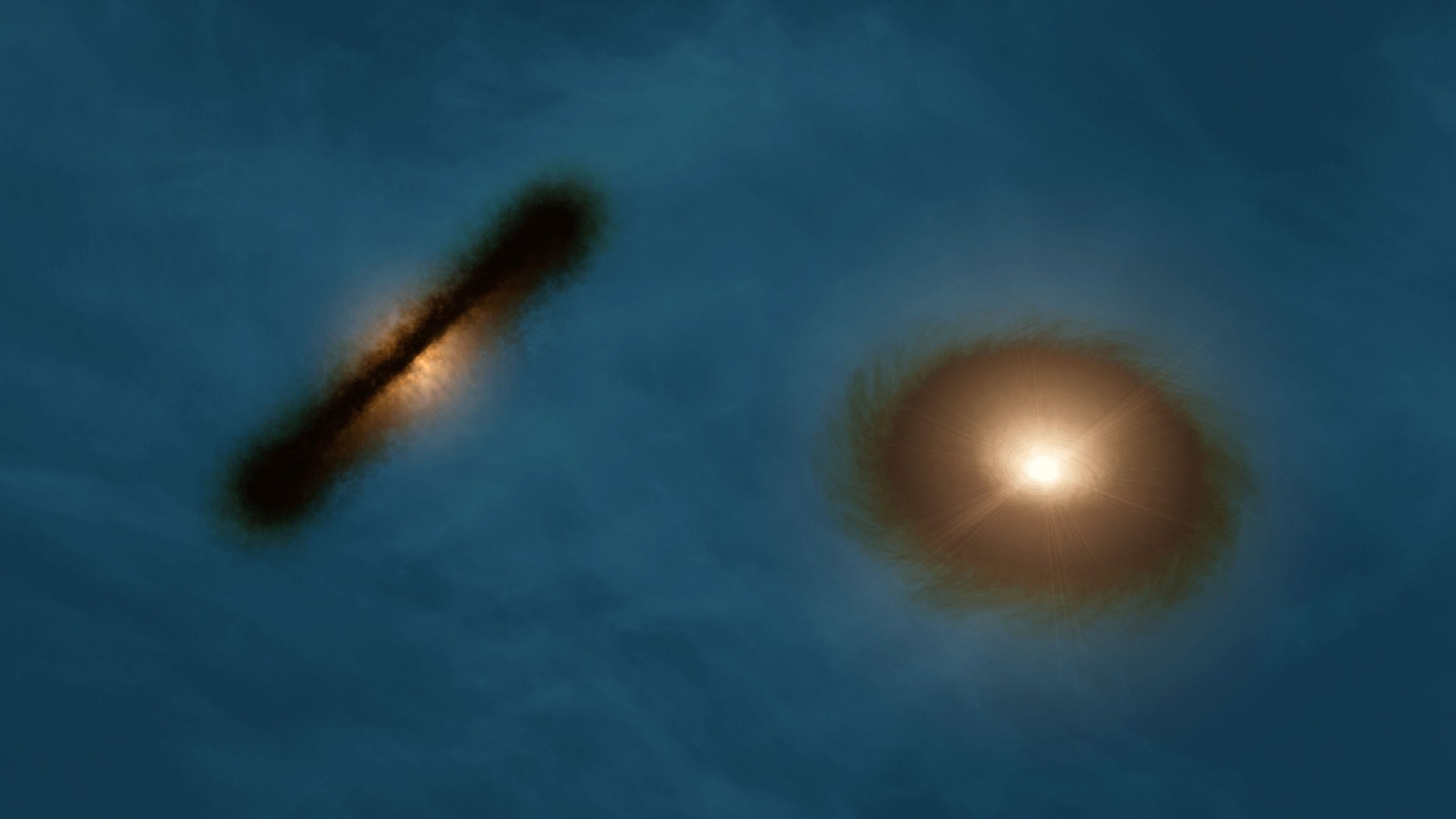
Astronomers Unravel Secrets of Weirdly Tilted Solar Systems
Stars wreak havoc with their twin brother's impressionable young planets.
Gas and dust disks wheeling around twin stars in the constellation Taurus are tilted dramatically with respect to each other, astronomers reported Wednesday, and will likely form into planets with similarly skewed orbits. (Related: "Planets Found With Crisscross Orbits—A First.")
The discovery confirms astronomers' suspicions of how alien solar systems can form with orbits oddly angled against their star's rotation, a puzzle posed by two decades' worth of discoveries of planets beyond our solar system. Reported in the journal Nature, the tightly orbiting young stars reside about 450 light-years away.
Theorists have long suspected that the gravitational pull of a second star could force planets into highly elongated or highly tilted orbits, or both, an effect known as the Kozai mechanism. "This is a really cool confirmation of this effect," said planet-formation theorist Alan Boss, of the Carnegie Institution of Washington in Washington, D.C., by email.
The tilted disks were found around the stars HK Tauri A and B, not with an ordinary telescope, but with the mammoth Atacama Large Millimeter/submillimeter Array, or ALMA, a collection of 66 radio dishes that work as one, located some 16,000 feet (4,877 meters) above sea level in Chile's Atacama Desert. (See "Cosmic Dawn.")
Unlike a star, which shines mostly in visible-light wavelengths, the cool disks of gas and dust that congeal into planets glow mostly with infrared and radio energy that requires ALMA's power to resolve.
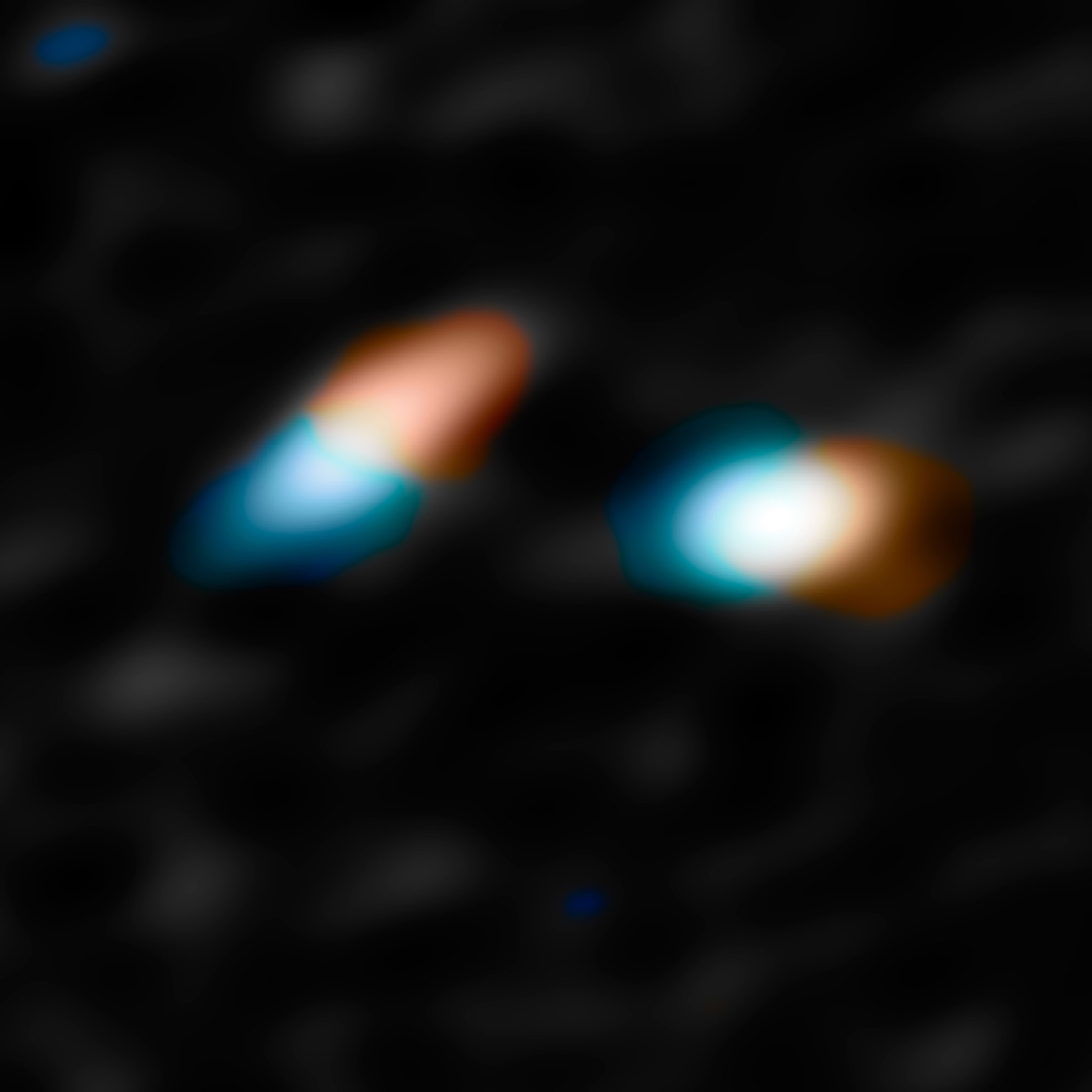
Odd Orbits
In our own solar system, the planets orbit the sun, our star, on a plane that closely matches its equator. Astronomical thinking is that in single-star solar systems, such as ours, the star and its nascent planetary disk form into planets that rotate in the more or less same plane—a relic of the fact that they both initially collapsed from a single clump of interstellar atoms and molecules.
Interactive: Goldilocks worlds are just right
for life—how many harbor intelligent life?

In the case of the twin star discovery, however, HK Tauri A and B are only about 13 times as far from each other as Neptune is from the sun (double stars are not at all uncommon in the Milky Way) in our solar system. When Eric Jensen of Pennsylvania's Swarthmore College and Rachel Akeson of Caltech focused ALMA's dishes at the HK Tauri system, they could easily see that the two stars' dust disks were tilted with respect to each other by 60 to 68 degrees.
"What that means," said Jensen in an interview, "is that they can't both be aligned with the stars' mutual orbits."
While the discovery confirms something theorists had already suspected, suspicions are sometimes dashed when the actual observations come in. The discovery of the very first exoplanet orbiting a sunlike star, back in 1995, provides the best example. Known as 51 Pegasi b, it's a gas giant world resembling Jupiter or Saturn, but it orbits so close to its parent star that its "year" is only four days long. Most theorists had assumed other solar systems would resemble our own; 51 Peg b destroyed that assumption in one blow.
In this case, however, the theorists seem to have been vindicated, Boss and other experts suggest. It wasn't strictly necessary to see a planet-forming disk to confirm the distorting effect that a second star might have, since the tilted orbits of planets themselves in more mature systems serve as a kind of evidence.
Once planets have formed, however, their relatively tiny size, said Jensen, makes it harder to tell just how skewed they are in their orbits. A disk is much larger, in contrast, so it's much easier to see whether it's tilted, and by how much.
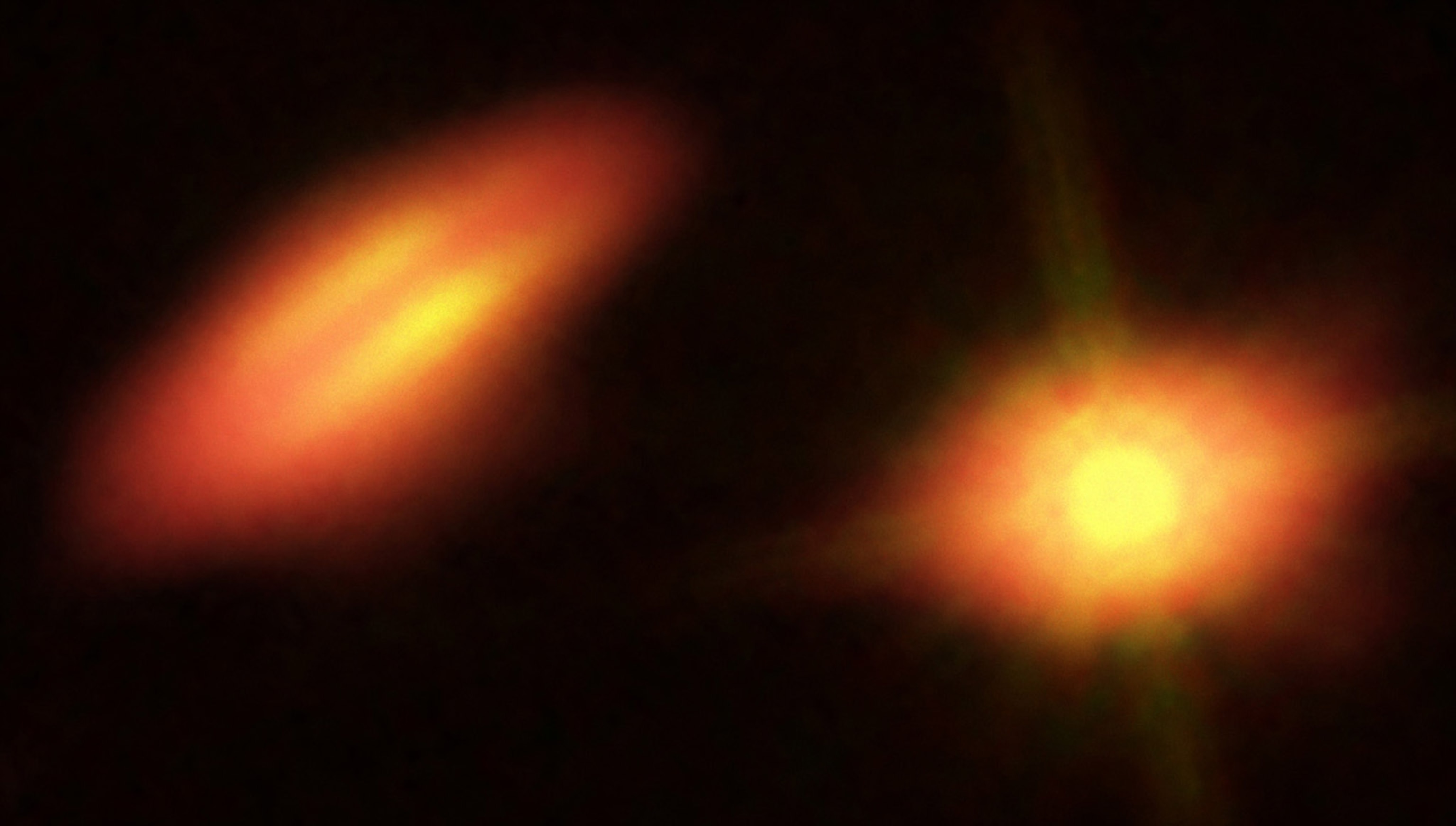
Eccentric Abundance
"Of course," said Boss, "this doesn't explain the 'weird' eccentricities and inclinations of exoplanets around single stars, which dominate the exoplanet population."
Oddball orbits of planets circling single stars are another mystery revealed by exoplanet discoveries, he notes. These orbits may arise from close gravitational encounters between planets after their original disk of gas and dust has dissipated.
Even our own solar system poses such riddles: Pluto, for example, even if you call it a dwarf planet, has an orbit that's both tilted and elongated; it sometimes comes closer to the sun than Neptune does.
"But at least," Boss said of the dueling disks discovery, "it confirms one mechanism that explains the unusual orbits in the case of binary stars."
Follow Michael D. Lemonick on Twitter.

